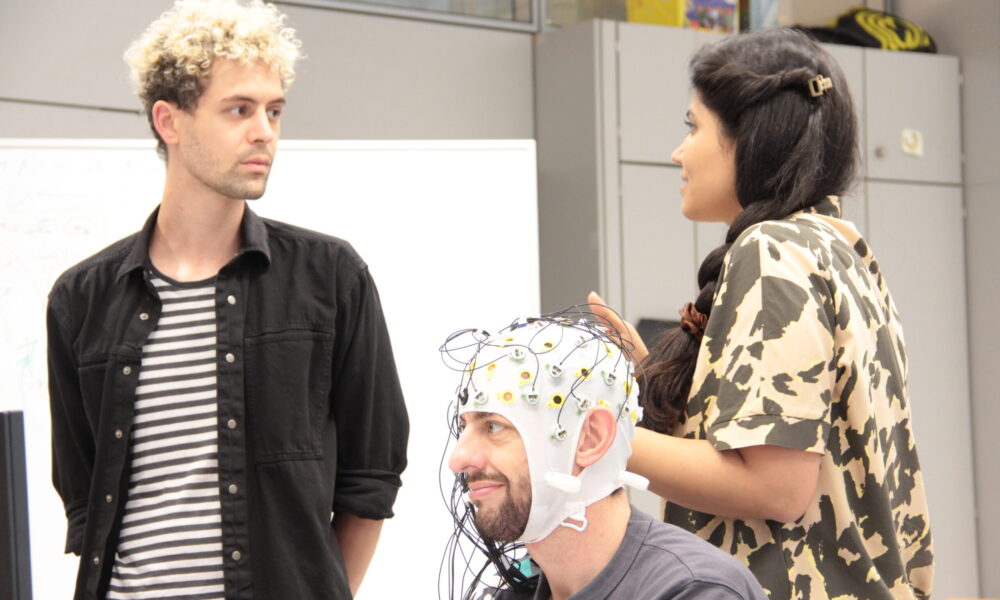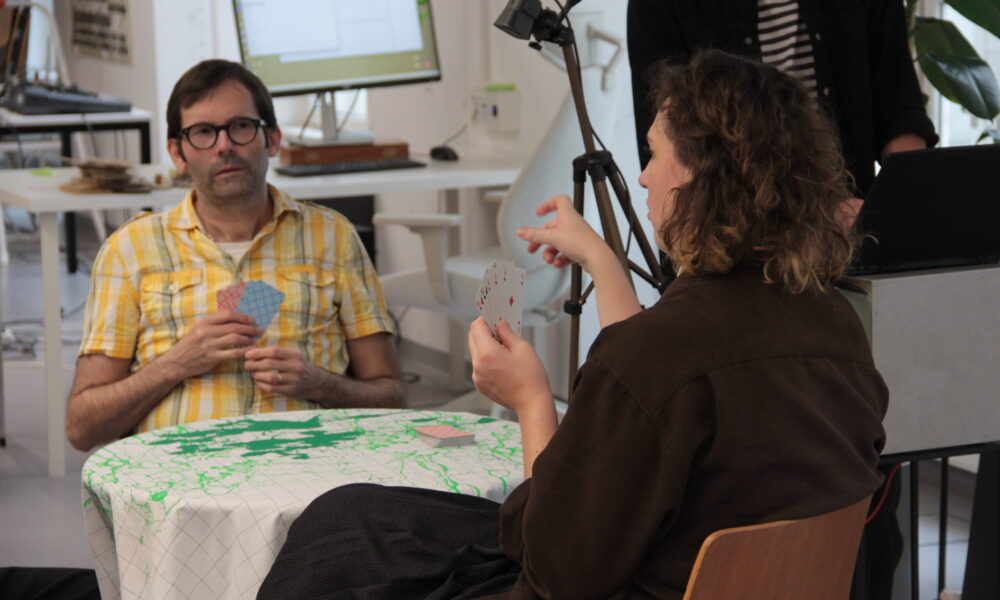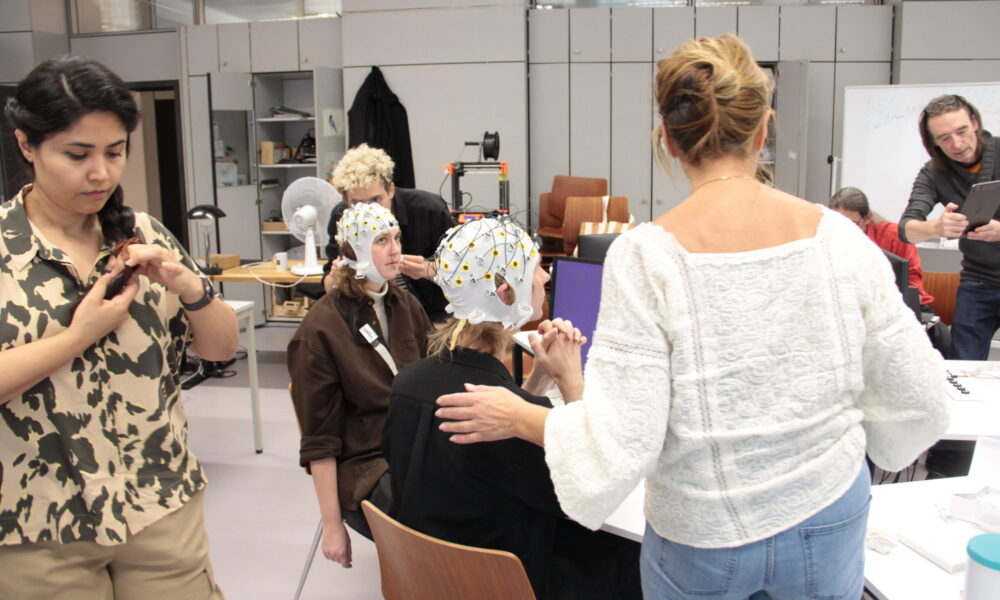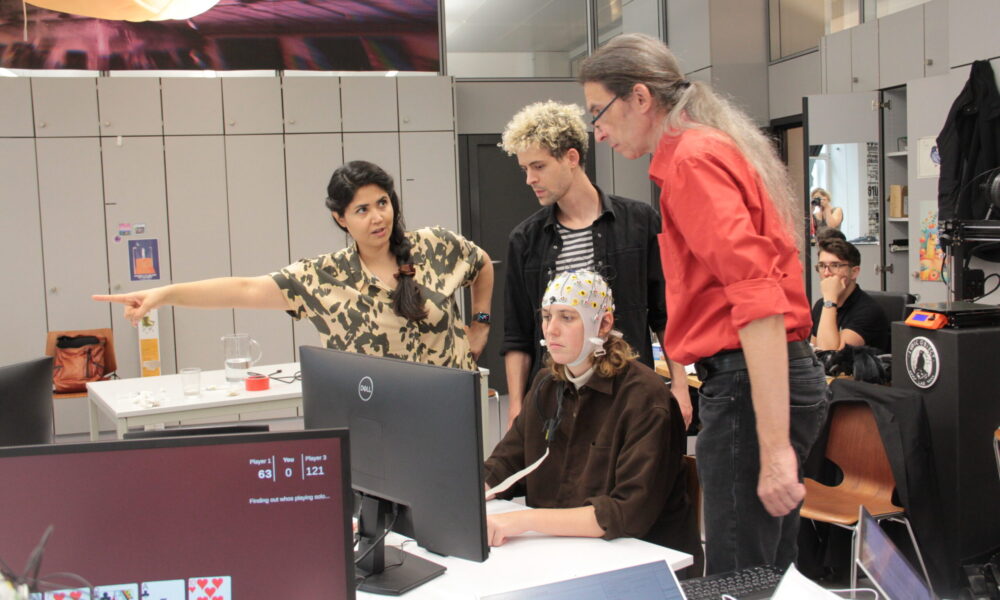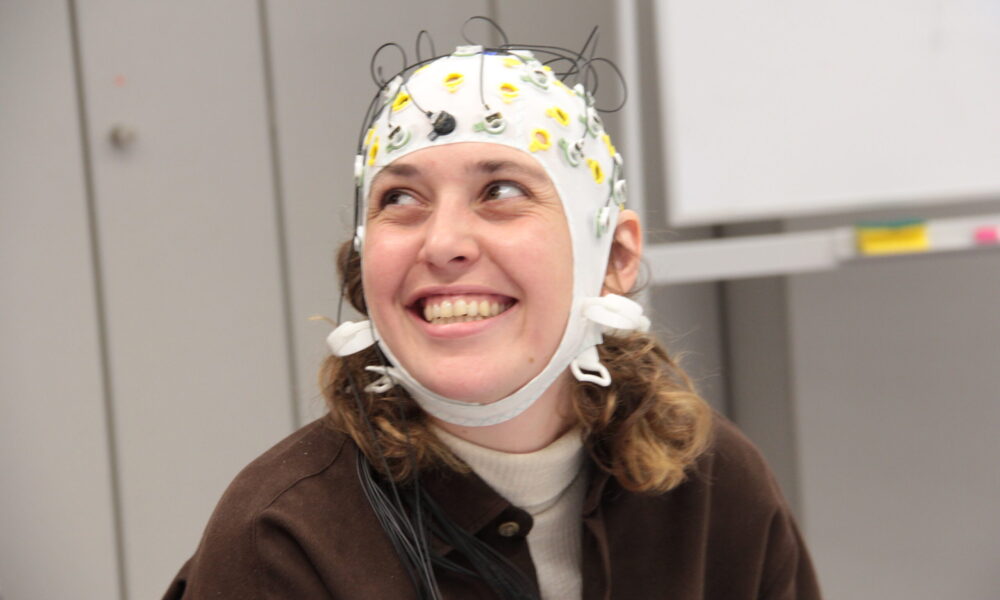We recently hosted a two-day workshop where we explored the experimental game, 501 – Psycholudic Shuffle, in a unique setup that combined gameplay with neuroscientific measurement. The workshop brought together participants from diverse fields, including cognitive psychology, neuroaesthetics, and game design, to test the physical version of our game and conduct a cutting-edge EEG hyperscanning experiment.
About the Game
501 – Psycholudic Shuffle is a physical game designed for three players, where participants switch roles during gameplay, creating an ever-evolving and dynamic interaction. The game challenges traditional roles in play, aiming to explore cognitive and social dynamics in a creative environment.
The Experiment: Integrating Gameplay with EEG Hyperscanning
Following the initial gameplay, we transitioned into the core experiment using three EEGs to create a hyperscan of all participants. This setup allowed us to capture real-time brain activity from each player, overlaying in-game events with EEG data for deeper insights into the cognitive and emotional processes during play.
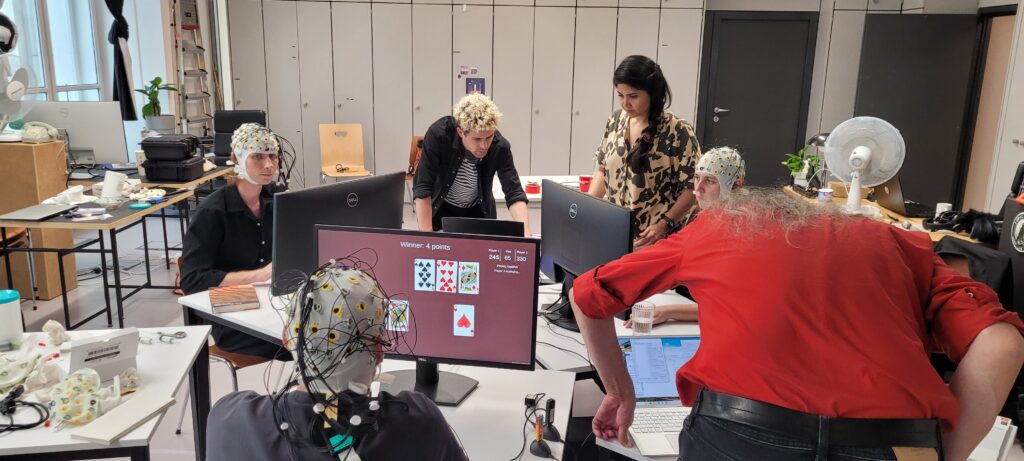
Key aspects of the experiment:
- Participants played the game for about half an hour with interfaces designed to minimize interference from traditional input methods like mouse or keyboard, enhancing the natural flow of the game.
- Data integration: In-game actions and events were synchronized with EEG data, creating a comprehensive view of how participants’ brains respond and interact during gameplay.
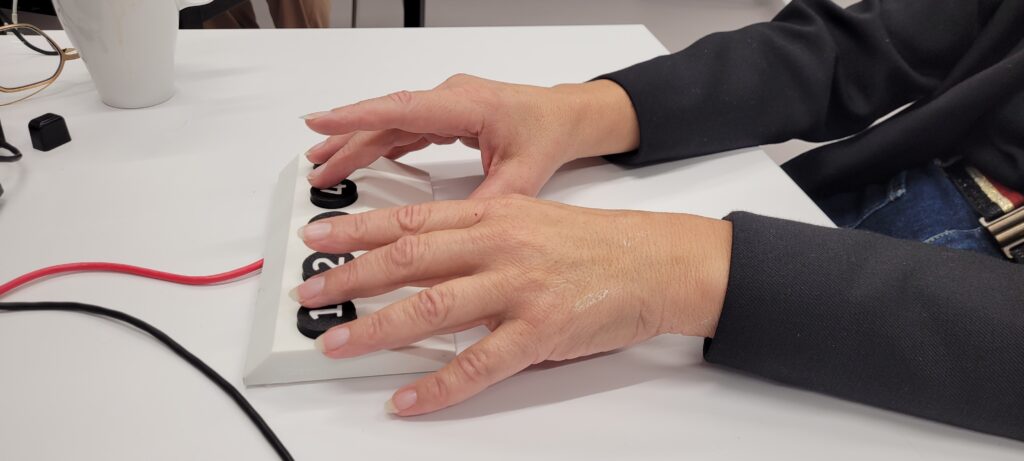
Participants and Collaborators
The workshop featured distinguished experts and artists from various fields who contributed to the discussion and analysis of the experiment:
- Margarete Jahrmann
Head of Experimental Game Cultures, University of Applied Arts Vienna - Matthew Pelowski
Assistant Professor, Psychology of Cognitive and Neuroaesthetics, University of Vienna, Faculty of Psychology - Stefan Glasauer
Computational Neuroscience, Brandenburg University of Technology, Cottbus - Zahra Shirzhiyan
Brandenburg Technical University - Theresa Demmer
University Vienna Artist Lab - Brigitte Felderer
Social Design, University of Applied Arts Vienna - Ryan Slaby
Università degli Studi di Milano Bicocca - Thomas Wagensommerer, Stefan Maier, Louise Linsenbolz, Max Moswitzer, Georg Luif
Members of research and artistic staff at the University of Applied Arts Vienna
Conclusions and Next Steps
This workshop marks a significant step in our ongoing research into the intersections of art, game design, and neuroscience. The data collected from this session will provide valuable insights into how we experience and interact during play, with future analyses planned to further explore the cognitive and emotional impacts of our experimental games.


